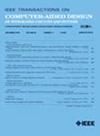通过基于激活的嵌入式系统残留块检测欺骗性噪声演讲
IF 2.7
3区 计算机科学
Q2 COMPUTER SCIENCE, HARDWARE & ARCHITECTURE
IEEE Transactions on Computer-Aided Design of Integrated Circuits and Systems
Pub Date : 2024-11-06
DOI:10.1109/TCAD.2024.3437331
引用次数: 0
摘要
欺骗性高噪声语音严重威胁着智能手机和智能助手等基于语音的嵌入式系统。因此,我们提出了一种反欺骗检测模型,利用基于激活的残差块来识别欺骗性高噪音语音,同时满足高精度和低时间开销的要求。通过对噪声在传统残差块捷径连接上的传播进行理论分析,我们发现在特定情况下,不同的激活函数有助于降低噪声的影响。随后,我们提出了一种特征感知激活函数,以弱化噪声的影响并增强捷径连接上的反欺骗特征,其中设计了一种细粒度处理来去除噪声并强化重要特征。我们还提出了一种基于方差递增的优化算法,以找到特征感知激活函数的最佳超参数。基于基准的实验证明,在 Jetson AGX Xavier 上,与十种最先进的方法相比,所提出的方法可以将反欺骗检测的平均等效错误率从 21.72% 降低到 4.51%,准确率提高了 37.06%,时间开销节省了 91.26%。本文章由计算机程序翻译,如有差异,请以英文原文为准。
Detecting Spoofed Noisy Speeches via Activation-Based Residual Blocks for Embedded Systems
Spoofed noisy speeches seriously threaten the speech-based embedded systems, such as smartphones and intelligent assistants. Consequently, we present an anti-spoofing detection model with activation-based residual blocks to identify spoofed noisy speeches with the requirements of high accuracy and low time overhead. Through theoretic analysis of noise propagation on shortcut connections of traditional residual blocks, we observe that different activation functions can help reducing the influence of noise under certain situations. Then, we propose a feature-aware activation function to weaken the influence of noise and enhance the anti-spoofing features on shortcut connections, in which a fine-grained processing is designed to remove noise and strengthen significant features. We also propose a variance-increasing-based optimization algorithm to find the optimal hyperparameters of the feature-aware activation function. Benchmark-based experiments demonstrate that the proposed method can reduce the average equal error rate of anti-spoofing detection from 21.72% to 4.51% and improve the accuracy by up to 37.06% and save up to 91.26% of time overhead on Jetson AGX Xavier compared with ten state-of-the-art methods.
求助全文
通过发布文献求助,成功后即可免费获取论文全文。
去求助
来源期刊
CiteScore
5.60
自引率
13.80%
发文量
500
审稿时长
7 months
期刊介绍:
The purpose of this Transactions is to publish papers of interest to individuals in the area of computer-aided design of integrated circuits and systems composed of analog, digital, mixed-signal, optical, or microwave components. The aids include methods, models, algorithms, and man-machine interfaces for system-level, physical and logical design including: planning, synthesis, partitioning, modeling, simulation, layout, verification, testing, hardware-software co-design and documentation of integrated circuit and system designs of all complexities. Design tools and techniques for evaluating and designing integrated circuits and systems for metrics such as performance, power, reliability, testability, and security are a focus.

 求助内容:
求助内容: 应助结果提醒方式:
应助结果提醒方式:


